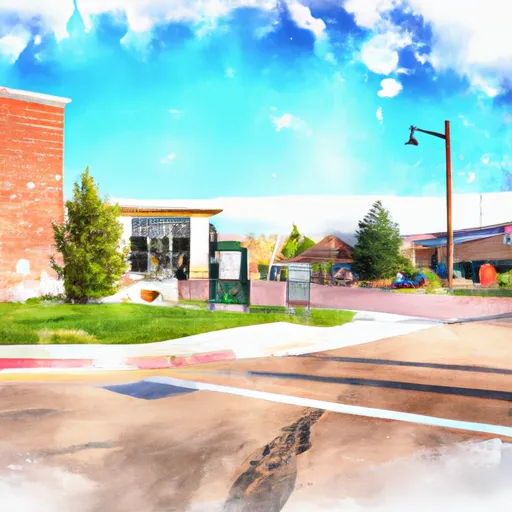-
 Snoflo Premium
Snoflo Premium
Get unlimited access to all our content
With no Ad interruptions! - Start Your Free Trial Login with existing account
Centennial
Eden Index
Climate
5.9
•
Recreation
6.9
•
Community
1.3
•
Safeguard
5.1/10

Centennial, Wyoming is a small town located in the southeastern part of the state, situated at an elevation of 8,200 feet. The climate in Centennial is typically cool and dry, with average annual temperatures of 41°F and an average annual precipitation of 19.1 inches. The area is known for its pristine water sources, with the Little Laramie River running through the town and providing excellent fishing opportunities for trout. Outdoor recreation opportunities are plentiful in Centennial, with nearby areas such as the Medicine Bow National Forest offering hiking, camping, and skiing. The Snowy Range Ski Area is a popular destination for winter sports enthusiasts, featuring over 250 inches of snowfall annually.
What is the Eden Index?
The Snoflo Eden Index serves as a comprehensive rating system for regions, evaluating their desirability through a holistic assessment of climate health, outdoor recreation opportunities, and natural disaster risk, acknowledging the profound impact of these factors on livability and well-being.
Climate Health Indicator (CHI): 5.9
Centennial receives approximately
655mm of rain per year,
with humidity levels near 68%
and air temperatures averaging around
2°C.
Centennial has a plant hardyness factor of
4, meaning
plants and agriculture in this region thrive during a short period during spring and early summer. Most
plants will die off during the colder winter months.
By considering the ideal temperature range, reliable water supplies, clean air, and stable seasonal rain or snowpacks, the Climate Health Indicator (CHI) underscores the significance of a healthy climate as the foundation for quality living.
A healthy climate is paramount for ensuring a high quality of life and livability in a region, fostering both physical well-being and environmental harmony. This can be characterized by ideal temperatures, reliable access to water supplies, clean air, and consistent seasonal rain or snowpacks.
Weather Forecast
Streamflow Conditions
North Platte
Area Rivers
North Platte
Snowpack Depths
North Platte
Reservoir Storage Capacity
North Platte
Groundwater Levels
Recreational Opportunity Index (ROI): 6.9
The Recreational Opportunity Index (ROI) recognizes the value of outdoor recreational options, such as parks, hiking trails, camping sites, and fishing spots, while acknowledging that climate plays a pivotal role in ensuring the comfort and consistency of these experiences.
Access to outdoor recreational opportunities, encompassing activities such as parks, hiking, camping, and fishing, is crucial for overall well-being, and the climate plays a pivotal role in enabling and enhancing these experiences, ensuring that individuals can engage in nature-based activities comfortably and consistently.
Camping Areas
| Campground | Campsites | Reservations | Toilets | Showers | Elevation |
|---|---|---|---|---|---|
| Rob Roy | 65 | 9,519 ft | |||
| Bockman - State Forest State Park | 52 | 9,078 ft | |||
| Pelton Creek | 16 | 8,240 ft | |||
| Lake Owen | 35 | 8,972 ft | |||
| North Michigan - State Forest State Park | 48 | 8,957 ft | |||
| Miller Lake | 7 | 9,052 ft | |||
| Evans Creek | 10 | 9,048 ft | |||
| Bobbie Thomson | 16 | 8,721 ft | |||
| North Sand Hills - Kremmling RMA | None | 8,622 ft | |||
| Holmes | 13 | 9,598 ft |
Nearby Ski Areas
Catastrophe Safeguard Index (CSI):
The Catastrophe Safeguard Index (CSI) recognizes that natural disaster risk, encompassing floods, fires, hurricanes, and tornadoes, can drastically affect safety and the overall appeal of an area.
The level of natural disaster risk in a region significantly affects safety and the overall livability, with climate change amplifying these risks by potentially increasing the frequency and intensity of events like floods, fires, hurricanes, and tornadoes, thereby posing substantial challenges to community resilience and well-being.
Community Resilience Indicator (CRI): 1.3
The Community Resilience Indicator (CRI) recognizes that education, healthcare, and socioeconomics are crucial to the well-being of a region. The CRI acknowledges the profound impact of these elements on residents' overall quality of life. By evaluating educational resources, healthcare accessibility, and economic inclusivity, the index captures the essential aspects that contribute to a thriving community, fostering resident satisfaction, equity, and social cohesion.

